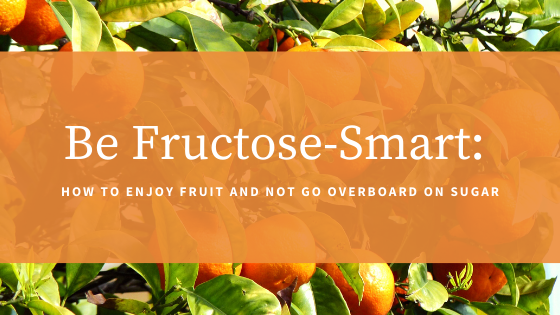“Eat your fruits and vegetables.” That’s something we hear every day. It’s not terrible advice, but it’s not the best, either, because fruits are high in sugar. (It would be better to say “Eat your vegetables and fruits” to emphasize the less-sugary of the two.) Fruits can be good for us, yes, but it’s good to remember to take the sugariness of fruits into account and to use them as a basis for healthy sweet treats instead of always putting them before veggies. It’s also useful to know which fruits have more sugar, either because of their inherent fructose levels or how they were processed.
High-sugar fruits: tropical fruits such as bananas, pineapples, papayas, and mangos
Low-sugar fruits: berries, especially cranberries (although beware of dried cranberries—they’re almost always coated with sugar), clementines, Asian pears, and watermelons
Medium-sugar fruits: most other fruits fall somewhere in between
Dried fruits are very high in sugar, and some fruits (dates, figs) are only available in dried form. Often, dried fruits are also coated with additional sugar. Be sure to avoid sugar-coated versions, and if you are going to use dried fruits, consider them to be the sole sweetener for whatever you’re sweetening. Some natural sweeteners are dried and ground fruits, as in the case of date sugar. Dehydrated fruits are usually not sugar-coated, which means you may be better off with dehydrated rather than dried fruits. The former is also very crisp, while some dried fruits may be moist and chewy. (Which you might prefer.)
Frozen fruits are typically comparable to fresh except with a less-firm texture, although frozen fruits may be sweetened with sugar or syrup. Canned fruits are almost always soaked in syrup, making them a non-optimal choice. You might find syrup made from fruit, like pomegranate molasses, date syrup, and cider syrup. These come in handy when you want to add a natural hint of sweetness to a glaze, sauce, or dressing. Sometimes fruits are brined and preserved without being sweetened (Moroccan preserved lemons, for example), but usually preserved fruits are made into jams and jellies and contain sugar. Look for jams and jellies with 8g or less of sugar per tablespoon and use them in place of refined sugars. Strawberry jam + milk + cream = fantastic homemade ice cream!
Of course, the most sugary form of fruit is fruit juice. Except for lemon and lime juice, fruit juice is pretty much just sugar, especially commercial fruit juice that has often been heat-treated and stored for long periods of time, resulting in faded micronutrients and flavor. If you do want fruit juice, it’s best to press it yourself and use it right away. But really, you’re better off eating the fruit than drinking its juice. If you’re going to make a smoothie, add fresh fruit and some healthy fat, like coconut milk, whole-milk dairy, nut/seed butter, avocado, and/or natural cocoa powder, and consider it to be dessert. It’s also worth pointing out that less-ripe versions of the same fresh fruit contain less sugar, which is why some cuisines use green papayas and green plantains as staple ingredients in savory dishes. And sometimes you’ll find a less-sugary variation of a given fruit—Granny Smith apples are the most tart of all apples, and white grapefruits are the most tart of the grapefruits.
Basically, when it comes to fruits, the same commonsense rule applies to them that applies to all foods: eat the least processed, freshest version you can find, and enjoy lots of variety! And just remember to put vegetables before fruits except when it’s time for dessert—that’s when fruits really shine. They’re the most flavorful natural sweetener you can find.



